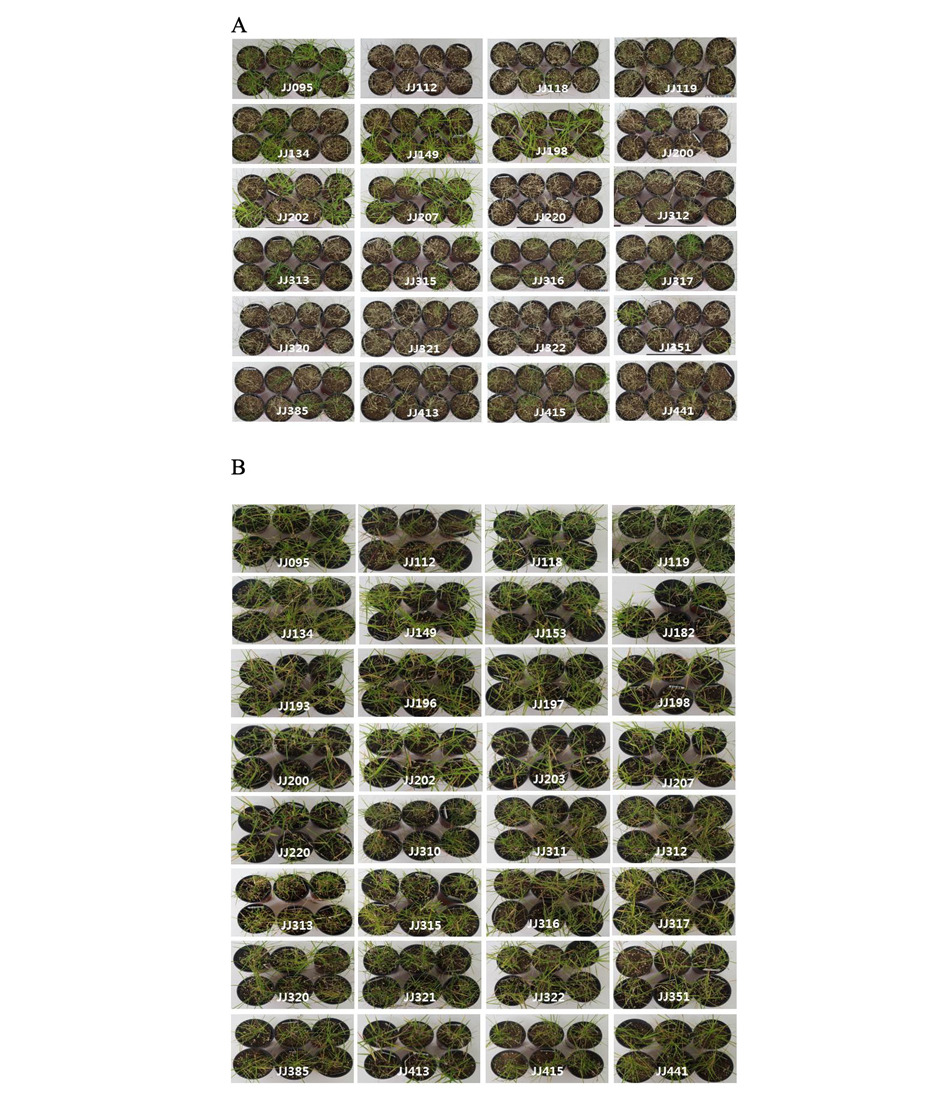Abstract
This study was carried out to investigate the characteristics of 242 zoysiagrasses collected in Korean peninsula and their hybrids for zoysiagrass breeding. Based on characteristics of leaf texture, growth rate, shoot density and emergence of inflorescence, thirty-six selections were initially determined from those collections over two years. A total of 101 cross combinations using three zoysiagrasses of Korean lawngrass (
Figures & Tables

Fig. 1. Growth of the selected zoysiagrass hybrids subjected to drought (A) and salt (B) stress.


